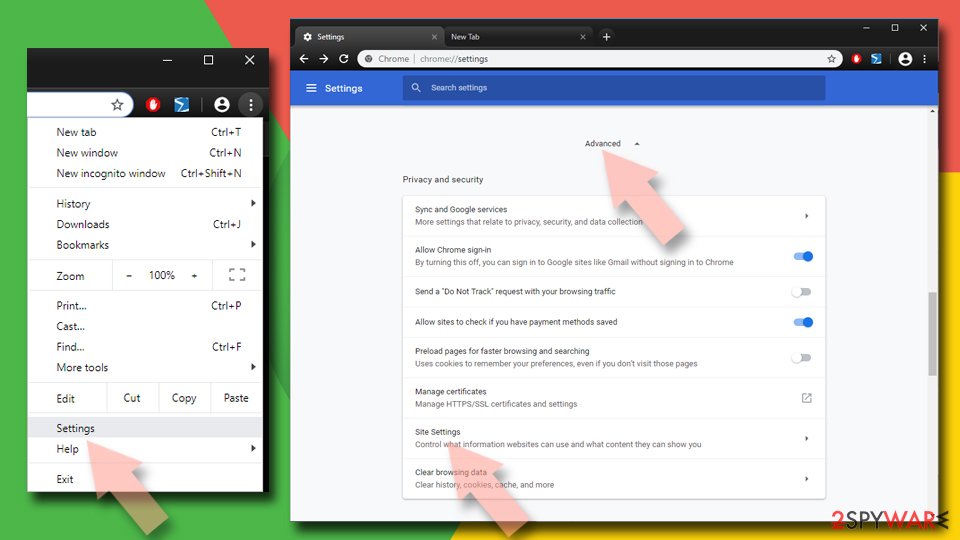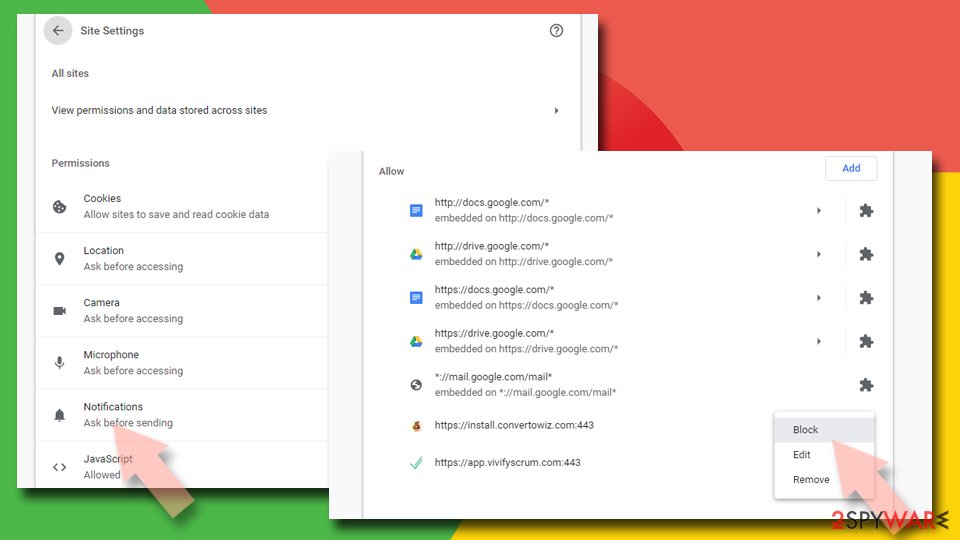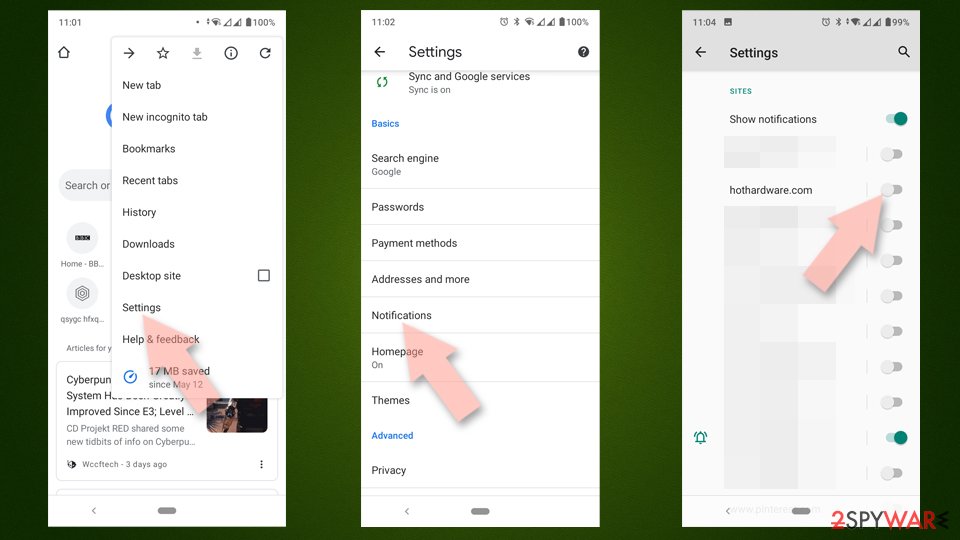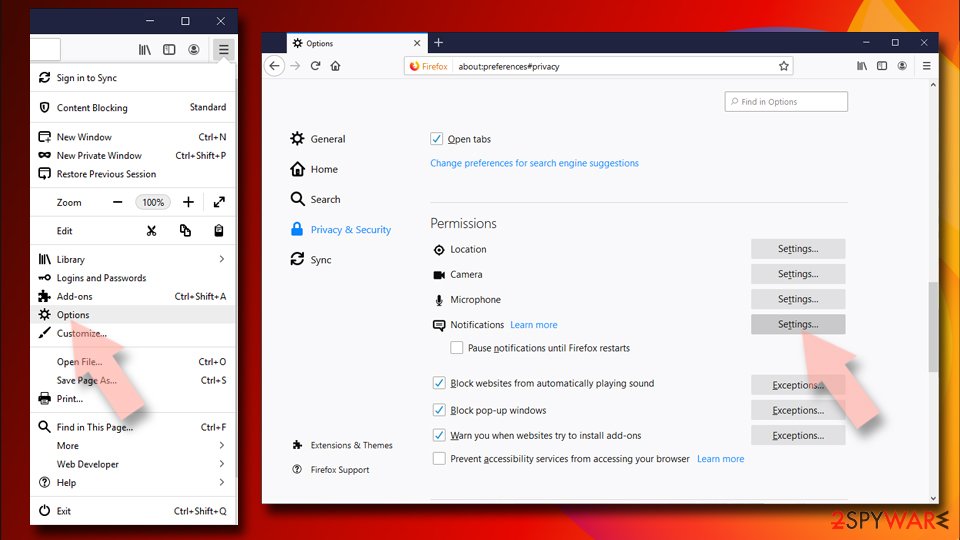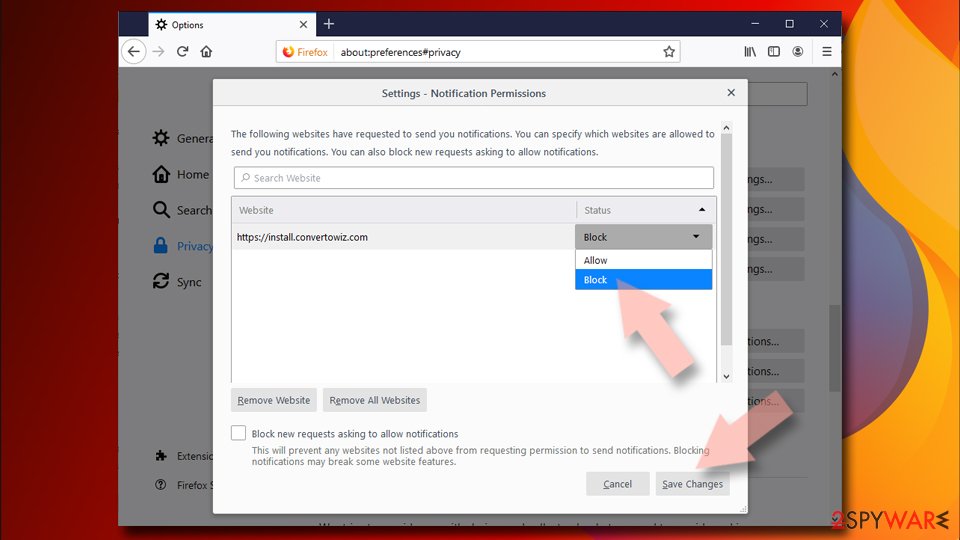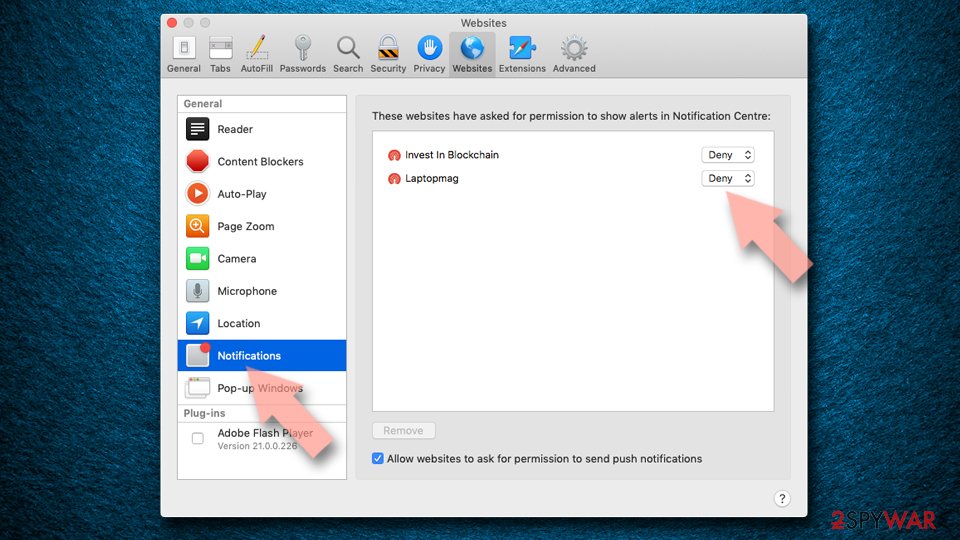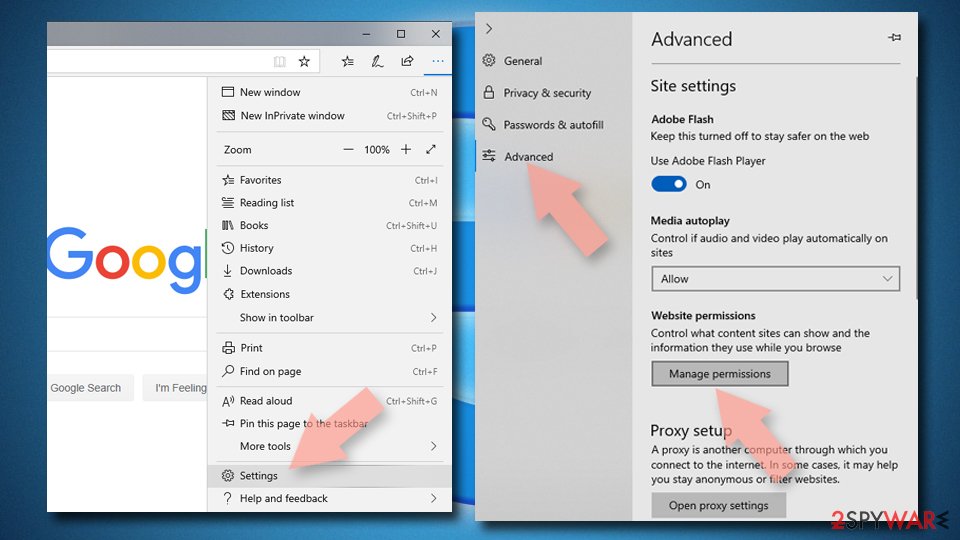Goodcaptcha.top ads (spam) - Free Guide
Goodcaptcha.top ads Removal Guide
What is Goodcaptcha.top ads?
Goodcaptcha.top is designed to look like a CAPTCHA verification so users would press “Allow”

Goodcaptcha.top is a deceptive site that uses social engineering tactics to trick people into subscribing to push notifications. The page tries to get users to click the “Allow” button which gives permission to show notifications. Users start getting spammed with annoying pop-up ads that can appear even when the browser is closed.
Crooks may use rogue advertising networks that place ads leading to dangerous websites. People can get fooled into providing personal information, downloading PUPs (potentially unwanted programs),[1] and even malware. This raises many user privacy and security concerns.
| NAME | Goodcaptcha.top |
| TYPE | Push notification spam; adware |
| SYMPTOMS | Pop-up ads can start to appear in the corner of the screen randomly and unexpectedly |
| DISTRIBUTION | Shady websites; deceptive ads; freeware installations |
| DANGERS | Links in the push notifications can lead to dangerous websites that try to trick people into providing personal information or downloading potentially unwanted programs |
| ELIMINATION | Go to your browser settings and disable the notifications from this site |
| FURTHER STEPS | Use a maintenance tool like FortectIntego to get rid of any remaining damage and optimize your machine |
Distribution methods
Pages like Goodcaptcha.top are not usually found through the search results. Most often, they hide in other shady pages that engage in illegal activities. For example, illegal streaming platforms[2] are unregulated so they are full of deceptive ads and sneaky redirects. They may also contain fake “Download” and “Play” buttons that open new tabs and may redirect users to suspicious pages.
Users should avoid clicking on random links and visiting unknown websites. People should also be aware of the dangers that freeware[3] distribution platforms pose. They include additional programs in the installers and do not disclose it properly. The bundled software may act as adware[4] to monetize the user activity.
It is best to use official web stores and developer websites whenever you want to install software because they are safe. You should also always choose the “Custom” or “Advanced” installation methods, read the Privacy Policy, and Terms of Use. The most important part is to check the file list and untick the boxes next to any unrelated apps.
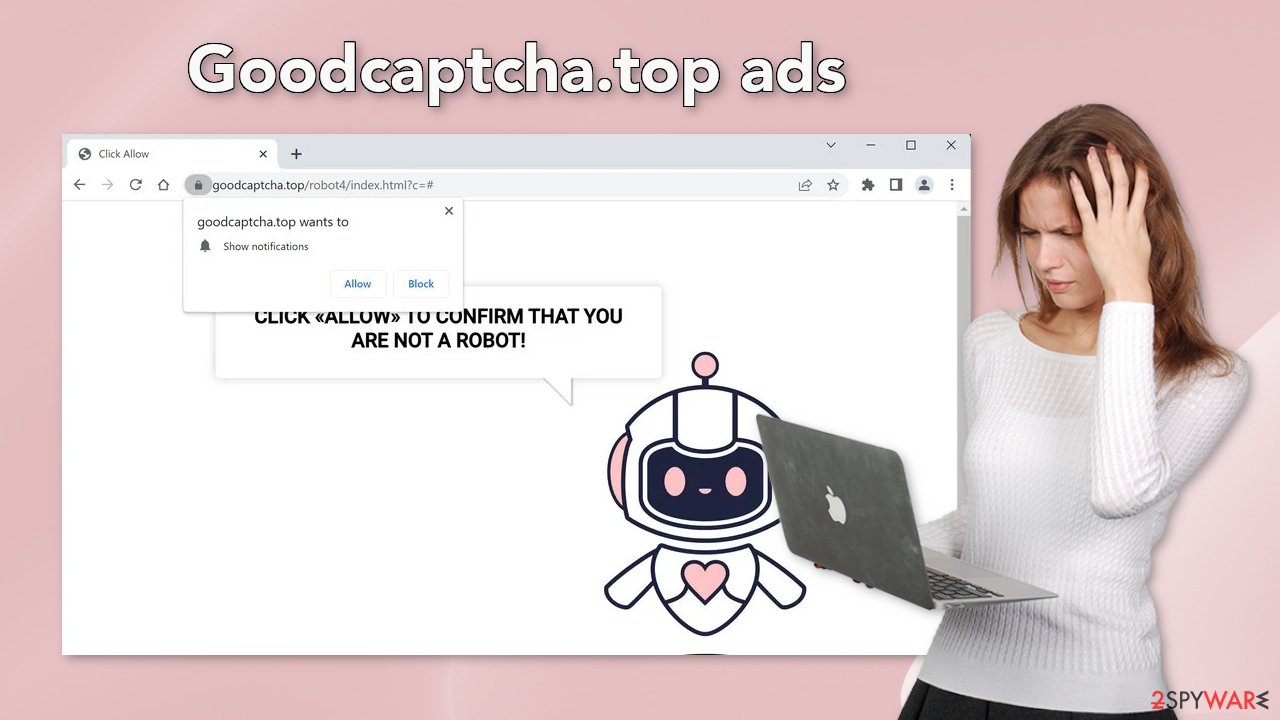
Stop the intrusive pop-ups
Push notifications are based on a subscription model, so users can enable and disable them manually in the browser settings. If you need help with the process, follow the guide below:
Google Chrome (desktop):
- Open Google Chrome browser and go to Menu > Settings.
- Scroll down and click on Advanced.
- Locate Privacy and security section and pick Site Settings > Notifications.
![Stop notifications on Chrome PC 1 Stop notifications on Chrome PC 1]()
- Look at the Allow section and look for a suspicious URL.
- Click the three vertical dots next to it and pick Block. This should remove unwanted notifications from Google Chrome.
![Stop notifications on Chrome PC 2 Stop notifications on Chrome PC 2]()
Google Chrome (Android):
- Open Google Chrome and tap on Settings (three vertical dots).
- Select Notifications.
- Scroll down to the Sites section.
- Locate the unwanted URL and toggle the button to the left (Off setting).
![Stop notifications on Chrome Android Stop notifications on Chrome Android]()
Mozilla Firefox:
- Open Mozilla Firefox and go to Menu > Options.
- Click on Privacy & Security section.
- Under Permissions, you should be able to see Notifications. Click the Settings button next to it.
![Stop notifications on Mozilla Firefox 1 Stop notifications on Mozilla Firefox 1]()
- In the Settings – Notification Permissions window, click on the drop-down menu by the URL in question.
- Select Block and then click on Save Changes. This should remove unwanted notifications from Mozilla Firefox.
![Stop notifications on Mozilla Firefox 2 Stop notifications on Mozilla Firefox 2]()
Safari:
- Click on Safari > Preferences…
- Go to the Websites tab and, under General, select Notifications.
- Select the web address in question, click the drop-down menu and select Deny.
![Stop notifications on Safari Stop notifications on Safari]()
MS Edge:
- Open Microsoft Edge, and click the Settings and more button (three horizontal dots) at the top-right of the window.
- Select Settings and then go to Advanced.
- Under Website permissions, pick Manage permissions and select the URL in question.
![Stop notifications on Edge 1 Stop notifications on Edge 1]()
- Toggle the switch to the left to turn notifications off on Microsoft Edge.
MS Edge (Chromium):
- Open Microsoft Edge, and go to Settings.
- Select Site permissions.
- Go to Notifications on the right.
- Under Allow, you will find the unwanted entry.
- Click on More actions and select Block.
How do I keep my browsing private?
All of the pages that you visit use cookies[5] to track your browsing activities. Generally, this is not a bad thing as it helps websites personalize the user experience, but in some cases, it can cause many issues. If the pages you visit do not have strong security, cookies can be hijacked and used for malicious purposes. Untrustworthy pages can also sell them to advertising networks and other third parties.
That is why it is important to clear your browsers regularly. This process can be automated with a maintenance tool like FortectIntego. It can delete all cookies and cache and also fix system damage, errors, registry issues which is especially helpful after a virus infection.
Scan the system for adware
Once you block the notifications, there is still a chance that there is adware hiding in your system. It is a type of PUP that can generate commercial content in the machine without your knowledge or consent. If you are still experiencing an increased amount of commercial content like surveys, banners, and redirects to suspicious pages, we strongly suggest deploying professional security tools like SpyHunter 5Combo Cleaner or Malwarebytes to scan your machine.
They can detect suspicious processes running in your machine and eliminate all the files causing it. What is more, it can prevent such infections in the future by warning you about a dangerous download. Of course, you can remove programs manually, but it can be difficult to identify PUPs as they can be disguised as “handy” tools that you use every day. If you want to perform manual removal, you can follow the instructions posted below for Windows and Mac systems:
Windows 10/8:
- Enter Control Panel into Windows search box and hit Enter or click on the search result.
- Under Programs, select Uninstall a program.
![Uninstall from Windows 1 Uninstall from Windows 1]()
- From the list, find the entry of the suspicious program.
- Right-click on the application and select Uninstall.
- If User Account Control shows up, click Yes.
- Wait till uninstallation process is complete and click OK.
![Uninstall from Windows 2 Uninstall from Windows 2]()
Windows 7/XP:
- Click on Windows Start > Control Panel located on the right pane (if you are Windows XP user, click on Add/Remove Programs).
- In Control Panel, select Programs > Uninstall a program.
![Uninstall from Windows 7/XP Uninstall from Windows 7/XP]()
- Pick the unwanted application by clicking on it once.
- At the top, click Uninstall/Change.
- In the confirmation prompt, pick Yes.
- Click OK once the removal process is finished.
Mac:
- From the menu bar, select Go > Applications.
- In the Applications folder, look for all related entries.
- Click on the app and drag it to Trash (or right-click and pick Move to Trash)
![Uninstall from Mac 1 Uninstall from Mac 1]()
To fully remove an unwanted app, you need to access Application Support, LaunchAgents, and LaunchDaemons folders and delete relevant files:
- Select Go > Go to Folder.
- Enter /Library/Application Support and click Go or press Enter.
- In the Application Support folder, look for any dubious entries and then delete them.
- Now enter /Library/LaunchAgents and /Library/LaunchDaemons folders the same way and terminate all the related .plist files.
![Uninstall from Mac 2 Uninstall from Mac 2]()
How to prevent from getting adware
Choose a proper web browser and improve your safety with a VPN tool
Online spying has got momentum in recent years and people are getting more and more interested in how to protect their privacy online. One of the basic means to add a layer of security – choose the most private and secure web browser. Although web browsers can't grant full privacy protection and security, some of them are much better at sandboxing, HTTPS upgrading, active content blocking, tracking blocking, phishing protection, and similar privacy-oriented features. However, if you want true anonymity, we suggest you employ a powerful Private Internet Access VPN – it can encrypt all the traffic that comes and goes out of your computer, preventing tracking completely.
Lost your files? Use data recovery software
While some files located on any computer are replaceable or useless, others can be extremely valuable. Family photos, work documents, school projects – these are types of files that we don't want to lose. Unfortunately, there are many ways how unexpected data loss can occur: power cuts, Blue Screen of Death errors, hardware failures, crypto-malware attack, or even accidental deletion.
To ensure that all the files remain intact, you should prepare regular data backups. You can choose cloud-based or physical copies you could restore from later in case of a disaster. If your backups were lost as well or you never bothered to prepare any, Data Recovery Pro can be your only hope to retrieve your invaluable files.
- ^ Wendy Zamora. What is a PUP? – How to avoid potentially unwanted programs. Malwarebytes. Security Tips, Tricks, and How-Tos.
- ^ Brittni Devlin. Why Should You Avoid Illegal Streaming Sites?. Makeuseof. Technology Blog.
- ^ Freeware. Wikipedia, the free encyclopedia Jump to navigationJump to search.
- ^ Lucian Constantin. What is adware? How it works and how to protect against it. Csoonline. Malware Blog.
- ^ Chris Maus. What Are Cookies and Are They Dangerous?. Qkey. Secure Online Payment Providers.
